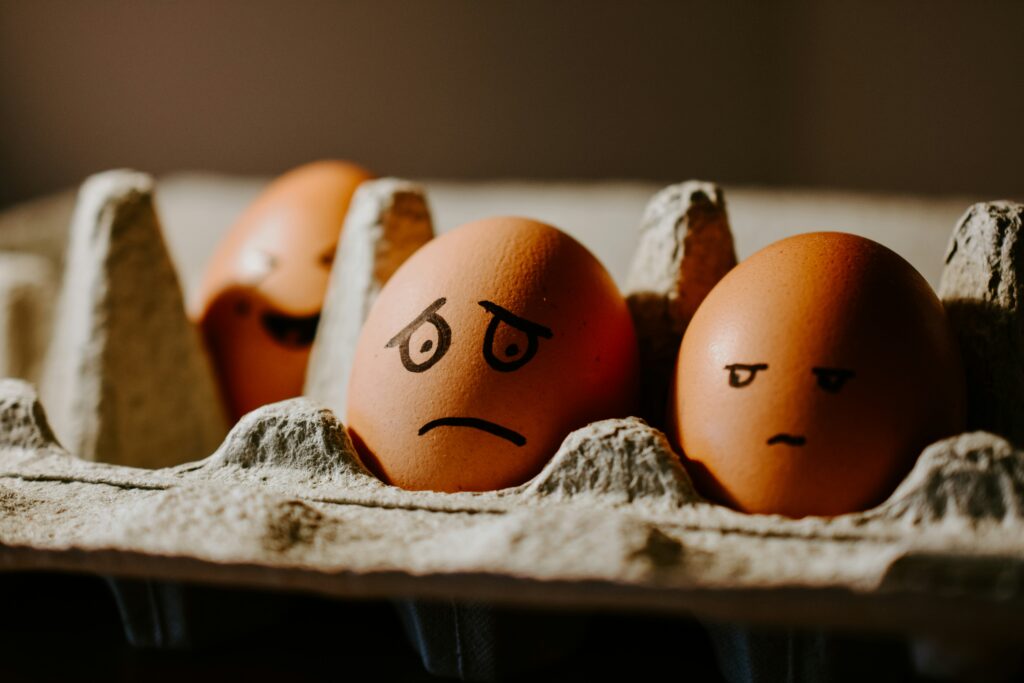Is Clean Eating a Cover for Disordered Eating?
Food and health dominate today’s cultural conversation. Scroll through any social media platform and you’ll be bombarded by “What I Eat in a Day” videos, recipe reels, and wellness influencers promoting food rules that promise everything from glowing skin to perfect gut health. On the surface, these messages may appear to be harmless inspiration. But those of us in the eating disorder community know that food fads can often mask or even encourage disordered eating patterns. All the content generated around “clean eating” is just another symptom of diet culture’s vice grip on society. But how much does clean eating cover up disordered eating? Here, we explore the roots and rise of clean eating and how this diet fad may hide or exacerbate disordered eating.
The Rise of #CleanEating
Though clean eating isn’t a new fad, social media continues to fuel its pervasive growth. On Instagram and TikTok, hashtags like #CleanEating or #EatClean have amassed millions of posts. Posts about clean eating often feature aesthetically presented meals that emphasize organic, seasonal ingredients and home cooking.
The reach of this content is staggering. According to recent reports, hashtags related to “clean eating” have generated billions of views on TikTok alone, while Instagram influencers often tie their “clean” lifestyle to aspirational wellness branding. Many of these posts don’t just share meals; they imply that eating this way leads to improved health, spiritual growth, or even moral virtue.
Research highlights that adolescents and young adults are particularly drawn to the concept. One study found that most participants viewed clean eating as “healthy.” For young people already immersed in online culture, these messages can feel especially persuasive.
Dieting and Eating Disorders: Why Restriction is a Risk
Before we look at “clean eating” more closely, let’s frame it in the context of diet culture at large. Research has consistently shown that dieting in any form can be a risk factor for eating disorders. Especially in combination with another risk factor like genetics, other mental illness, or substance use, dieting can encourage disordered eating behaviors. Evidence shows that those following “special” diets (such as paleo, vegan, gluten-free, or raw) are at greater risk of developing eating disorders. Even medically necessary diets, like gluten-free for celiac disease or carbohydrate monitoring for diabetes, have been linked to increased eating disorder risk.
Clean Eating and Eating Disorders
Diet culture alone is a risk factor for eating disorders, and it’s difficult to tease out the specific impact of clean eating. But the philosophy of the clean eating movement plays into some harmful narratives that connect to disordered eating.
Is Clean Eating Orthorexia Nervosa in Disguise?
The signs and symptoms of one eating disorder – orthorexia nervosa – may look very similar to clean eating on the surface. While not yet an official diagnosis in the DSM-5, orthorexia nervosa describes a pathological fixation on eating only foods perceived as “healthy” or “pure.”
At first glance, orthorexia may look like dedication to wellness. But in reality, it’s a mental illness. People struggling with orthorexia nervosa may often:
- Spend significant time planning, sourcing, or preparing “clean” foods.
- Experience anxiety, guilt, or shame when deviating from their rules.
- Avoid social situations that involve food.
- Judge themselves or others based on eating choices.
Research on orthorexia nervosa is highly varied. Like many mental illnesses, it can be difficult to study and diagnose. However, meta-analyses found that three out of ten people demonstrate orthorexia tendencies, with higher rates among athletes, medical students, and those frequently exposed to wellness culture. While orthorexia remains under-researched, its overlap with trends like clean eating makes it a growing concern.
Morality and Food
Clean eating and orthorexia share many of the same characteristics, including the idea that moral virtue is tied to food choices. As the physician and author Margaret McCartney observed:
“The command to eat cleanly implies that everyone else is filthy, being careless with their bodies and lives…But this nonsense is all based on a loose interpretation of facts and a desire to make the pursuit of wellbeing an obsessive, full-time occupation.”
When put like that, the popularity of clean eating begs the question of who it is helping and who it is hurting. Even though clean eating seems less tied to capitalist roots than other fad diets that are associated with a specific product, it still propels the same narrative forward: what we eat and how we look determines our value.
This creates a hierarchy: those who follow “clean” diets are seen as disciplined, virtuous, or superior. Not only is this scientifically inaccurate, but it also fuels shame, stigma, and unhealthy relationships with food
Defining what’s “healthy” isn’t straightforward. Nutrition needs vary across individuals, and rigid labels like “good” or “bad” foods often do more harm than good. Similarly, recovery from eating disorders is not one-size-fits-all; it’s personal, nuanced, and requires flexibility. In recovery, breaking away from food moralizing is key. No single food has the power to define a person’s worth.
How Clean Eating May Impact Other Eating Disorders
While clean eating shares clear overlap with orthorexia nervosa, its influence extends to other eating disorders as well. For many individuals, what begins as a seemingly harmless pursuit of health can gradually evolve into restrictive patterns that resemble another eating disorder diagnosis.
The rigid rules of clean eating often create restrictive eating patterns. What begins as cutting out certain foods may progress enough to cause severe caloric restriction. Often, eating “healthy” is a socially acceptable explanation for not eating enough. People struggling with body image issues may use ‘healthy eating’ as a socially acceptable disguise for restrictive behaviors, allowing eating disorders to hide in plain sight.
Clean eating can also fuel binge eating disorder by amplifying feelings of deprivation. When foods are labeled “unclean” or “off-limits,” it may intensify preoccupation with them. Over time, the restriction can lead to episodes of binge eating, often done in secret and accompanied by feelings of shame.
In some cases, when clean eating becomes disordered eating, it might not fit neatly into one diagnostic category. Instead, their behaviors may align with OSFED (Other Specified Feeding or Eating Disorder), which captures clinically significant disorders that don’t fully meet the criteria for anorexia nervosa, bulimia nervosa, or binge eating disorder.
What We Can Do Instead
Clean eating carries risks for overlapping with disordered eating behaviors. But clean eating is also based around principles for fueling your body that can be supportive! Finding balance is what’s important. We advocate for shifting away from a binary view of food (i.e. some are good and some are bad) toward a balanced, flexible, and compassionate approach.
- Adopt a non-diet, intuitive eating practice. Intuitive eating encourages tuning into hunger and fullness cues rather than following rigid external rules. Research shows it can support psychological well-being, reduce disordered eating behaviors, and improve body satisfaction.
- Support media literacy. Helping each other critically evaluate online wellness content can reduce the internalization of harmful food rules. Questions like, “Who benefits from this message?” or “What evidence supports this claim?” help distance ourselves from the more harmful edges of wellness culture.
- Promote individualized care. Every body has different needs, and no single diet fits all. For those in recovery, working with trained providers such as registered dietitians, therapists, and medical professionals can help rebuild your relationship with food.
Looking Beyond “Clean”
On the surface, clean eating may appear harmless. But when we peel back the layers, it often carries restrictive rules, moral judgment, and potential pathways to disordered eating.
As advocates, providers, and community members, we must be cautious about how we frame food and wellness. Health is not determined by eating certain foods or following rigid rules. If you or someone you know is struggling with anxiety around food or restrictive eating patterns, support is available. The Alliance for Eating Disorders offers resources, education, and community to help individuals and families find a path toward healing.


